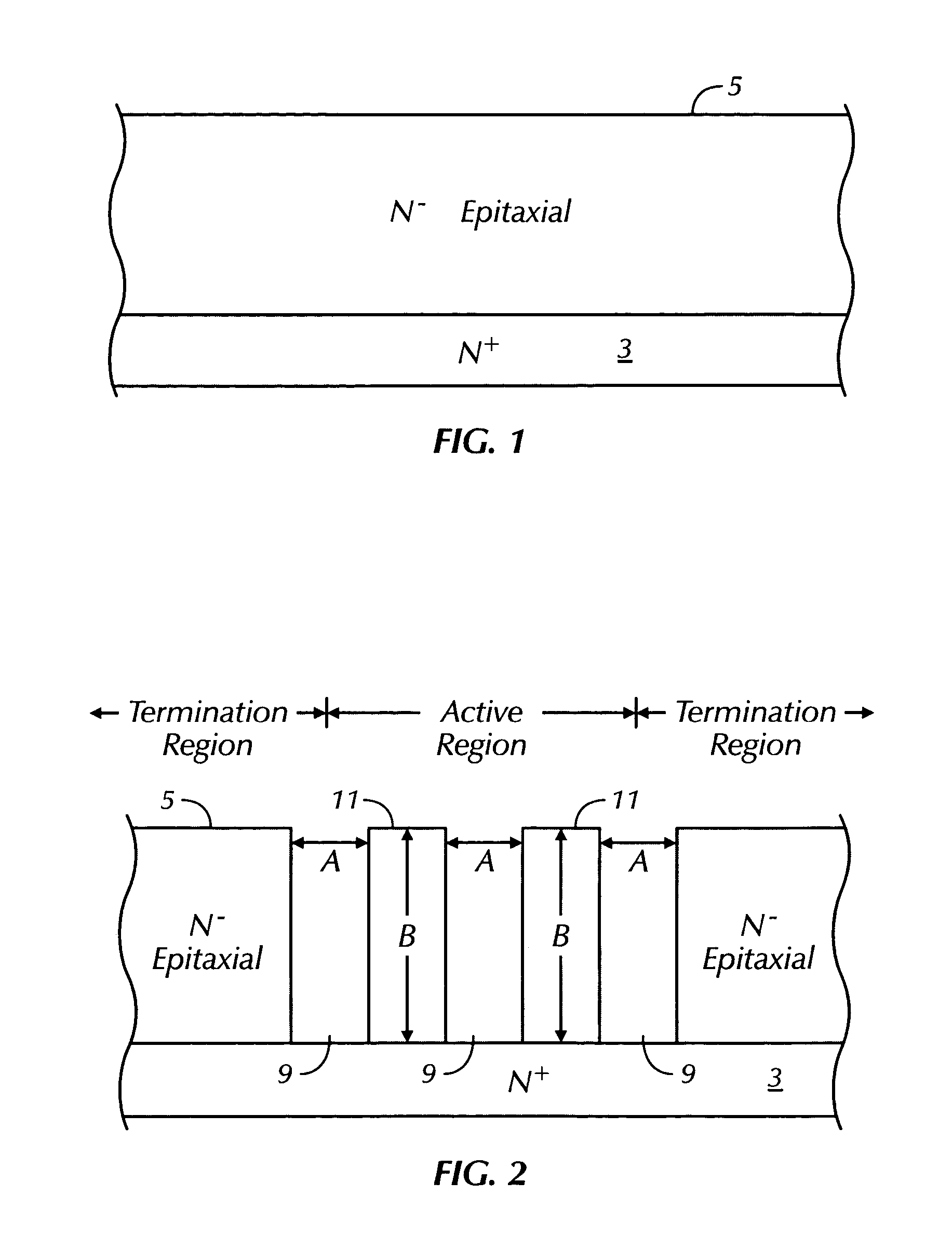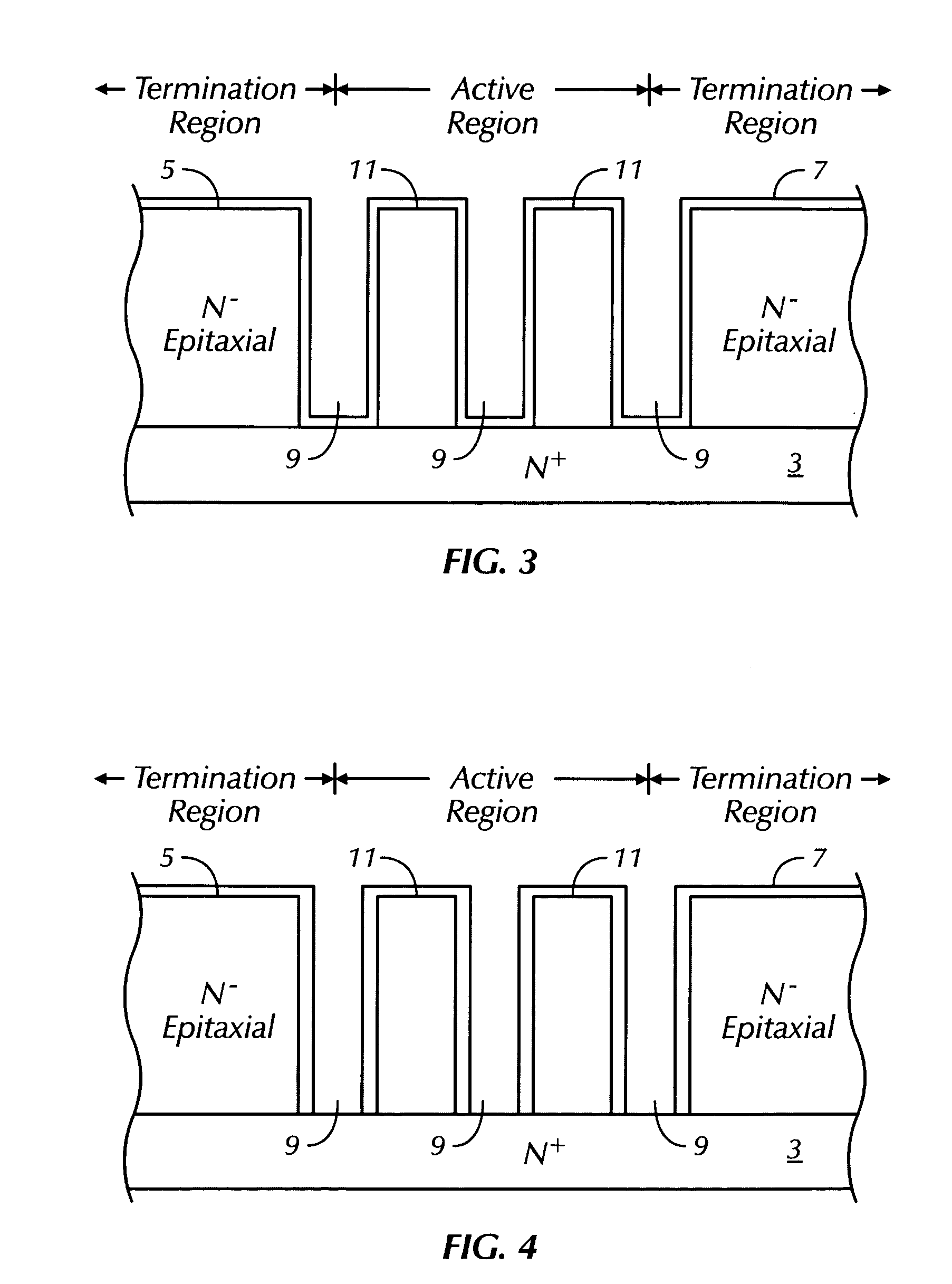Method of manufacturing a superjunction device with conventional terminations
a technology of superjunction device and conventional termination, which is applied in the direction of semiconductor devices, basic electric elements, electrical equipment, etc., can solve the problem of blocking the implantation of the trench
- Summary
- Abstract
- Description
- Claims
- Application Information
AI Technical Summary
Benefits of technology
Problems solved by technology
Method used
Image
Examples
Embodiment Construction
[0029]Certain terminology is used in the following description for convenience only and is not limiting. The words “right”, “left”, “lower”, and “upper” designate directions in the drawing to which reference is made. The words “inwardly” and “outwardly” refer direction toward and away from, respectively, the geometric center of the object described and designated parts thereof. The terminology includes the words above specifically mentioned, derivatives thereof and words of similar import. Additionally, the word “a”, as used in the claims and in the corresponding portions of the specification, means “at least one.”
[0030]FIGS. 1–11 generally show a process for manufacturing a superjunction device with conventional terminations in accordance with a first preferred embodiment of the present invention.
[0031]Referring to FIG. 1, there is shown a partial view of a semiconductor wafer that includes a heavily doped N+ substrate 3 and a lightly doped N− layer 5. As used herein, reference to ...
PUM
 Login to View More
Login to View More Abstract
Description
Claims
Application Information
 Login to View More
Login to View More - R&D
- Intellectual Property
- Life Sciences
- Materials
- Tech Scout
- Unparalleled Data Quality
- Higher Quality Content
- 60% Fewer Hallucinations
Browse by: Latest US Patents, China's latest patents, Technical Efficacy Thesaurus, Application Domain, Technology Topic, Popular Technical Reports.
© 2025 PatSnap. All rights reserved.Legal|Privacy policy|Modern Slavery Act Transparency Statement|Sitemap|About US| Contact US: help@patsnap.com



